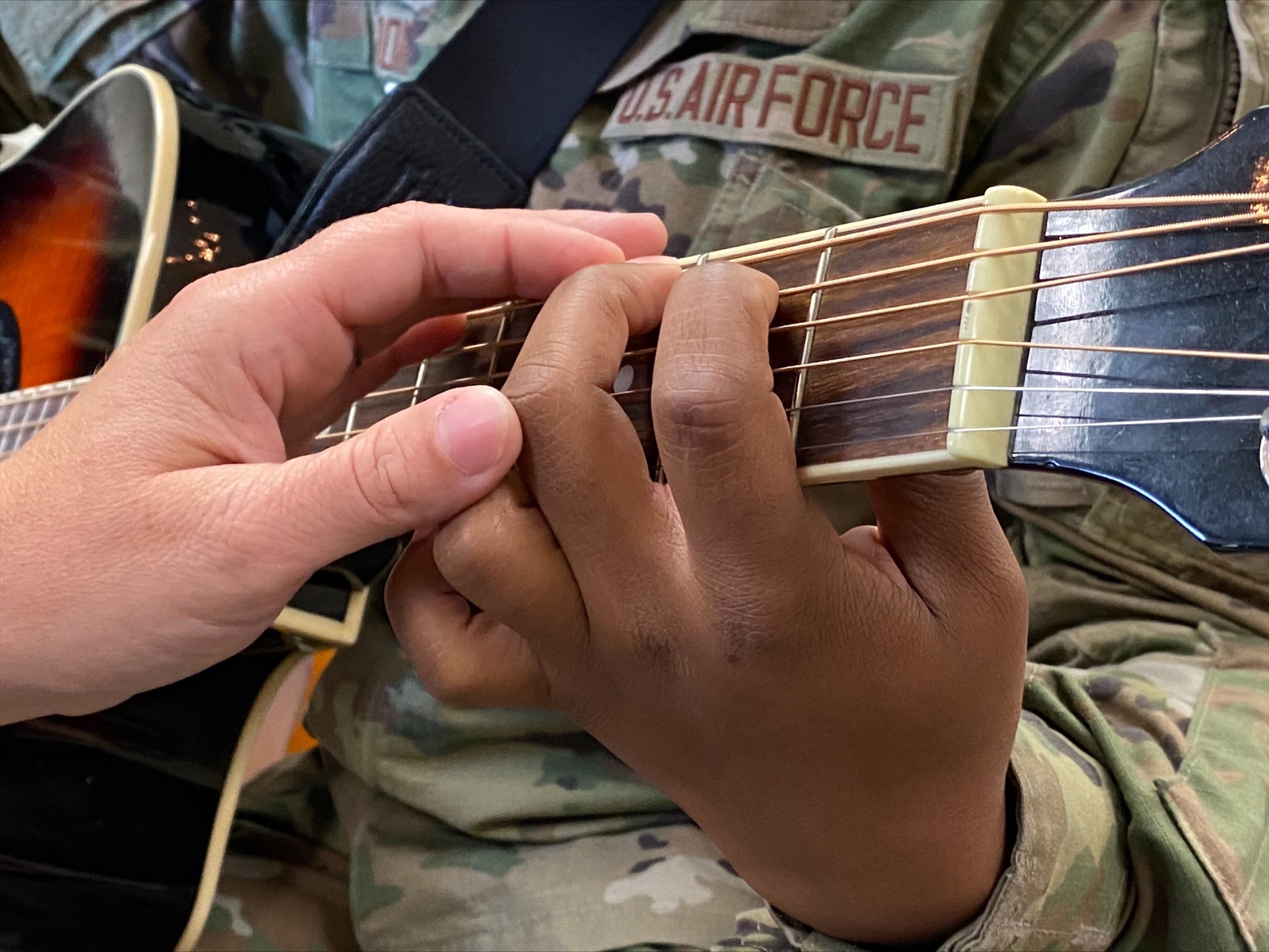New Report: Clinical Research Priorities for Creative Arts Therapies Addressing Service Members and Veterans with TBI and Associated Psychological Health Conditions

Download the full report (272 kb)
Introduction
In November 2023, Creative Forces hosted the first State of the Science Summit, “Advancing Creative Arts Therapies Research for Military-Connected Populations,” at the (External link)Henry M. Jackson Foundation for the Advancement of Military Medicine headquarters in Rockville, Maryland. This two-day hybrid event brought more than 100 clinicians and researchers together to focus on the state of creative arts therapies research for military and veteran populations.
After the summit, a group of academic researchers and health professionals from the fields of creative arts therapies, neuroscience, rehabilitation medicine, and behavioral health participated in a series of roundtable discussions. They identified key topics warranting further investigation, as well as the resources and actions necessary to advance research into the impact of creative arts therapies on miltitary-connected populations.
The Creative Forces clinical team remains committed to developing practical clinical solutions based on research findings by working closely with clinicians, researchers, and academic partners.
Report Summary
Research on the use of creative arts therapies for military and veteran populations shows promise for improving a variety of factors and outcomes. A robust body of evidence is imperative to demonstrate the value of creative arts therapies for patients and healthcare systems and to develop infrastructure and policy for integrating creative arts therapies into healthcare for military and veteran populations.
This new report, “Clinical Research Priorities for Creative Arts Therapies Addressing Service Members and Veterans with TBI and Associated Psychological Health Conditions,” summarizes the ideas generated during the summit and roundtable deliberations about how to develop a strong body of evidence. It identifies potential topics in need of research, as well as resources and actions to support that research. The report is designed to inspire collaboration, innovation, and investment in research on creative arts therapies to improve outcomes for military and veteran populations.
Vision for the Field
A core aim of this field of research is to build an understanding of the impact of creative arts therapies for service members and veterans with traumatic brain injury and psychological consequences of trauma. This aim is being pursued by conducting high-quality studies informed by research-practitioner partnerships.
Summit and roundtable participants identified multiple fields of impact that warrant study: biological, psychological, functional, behavioral, social, and economic impacts. These fields address the breadth of clinical outcomes, underlying mechanisms of change, foundations for treatment innovations, and systemic impact. Based on summit proceedings and subsequent roundtable discussions, a long-term vision for researchers, practitioners, and policymakers is that:
Creative arts therapies optimize sustainable outcomes through evidence-based practice for military-connected populations.
Research Needs
Summit and roundtable participants discussed the topics most essential for research on using creative arts therapies for service members and veterans. Roundtable participants refined the following list, in no specific order, taking into consideration patient needs and a timeframe of eight to ten years. Among roundtable participants, this was the span of time considered necessary for developing research resources, obtaining funding, conducting studies, and publishing findings.
- Cognition
- Emotion regulation
- Functional activity
- Opioids and other substance use
- Pain
- Suicide
- Trauma exposure
Proposed Actions for the Field
The summit and roundtable discussions considered the essential resources and actions necessary for rigorous, programmatic research that builds a body of evidence for using creative arts therapies in military and veteran populations. The following actions can be taken by researchers and clinicians, both within and across institutions, to develop the necessary research tools, practices, and infrastructure.
Develop Research Tools through Systematic Study:
- Standardize interventions
- Standardize measurement of outcomes
- Enhance protocols and measures through systematic research and training
- Plan a progression of studies that will demonstrate the comprehensive value of creative arts therapies for military and veteran populations
Build Research Practice and Infrastructure:
- Strengthen and broaden research partnerships and networks
- Implement stepwise, systematic research
- Share technical resources
- Expand training opportunities
- Cultivate funding
- Strengthen policy
About the Report
Creative Forces®: National Endowment for the Arts Military Healing Arts Network and the Henry M. Jackson Foundation for the Advancement of Military Medicine, Inc. commissioned this report. Authored by ProgramWorks, who attended the summit and facilitated the roundtables, the report summarizes potential new research directions generated at the summit and in the post-summit roundtable discussions. It is intended to serve as a planning tool for military and civilian researchers and clinicians who wish to study the efficacy and impact of creative arts therapies in military and veteran populations.